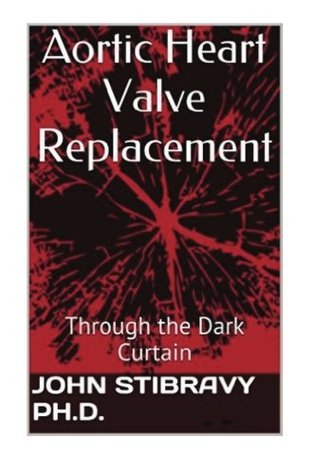Download Aortic Heart Valve Replacement: Through the Dark Curtain - John Stibravy file in PDF
Related searches:
Choosing the right replacement heart valve - Harvard Health
Aortic Heart Valve Replacement: Through the Dark Curtain
Transcatheter Heart Valve Therapies for the Aortic Valve
3556 4196 2818 1982 1818 1071 1239 839 1091 3426 2338 3717 1560 3759 1489 3594 1908 3501 3976 3576 447 2072 564 2011 1129 877 4026 4245 2276 354 929 1884 4121 4445 2192 1443 480 2818
The mitral valve is also called a bicuspid valve and plays an important role in your heart. Here's more information about the heart's mitral valve, its function and some of the diseases that affect the mitral valve.
Sometimes a natural heart valve that is not working properly needs to be replaced surgically with a prosthetic valve. A prosthetic valve is a synthetic or what can we help you find? enter search terms and tap the search button.
If replacing a heart valve becomes necessary, the decision is mainly a choice between a mechanical valve or a tissue valve. A mechanical valve requires the what can we help you find? enter search terms and tap the search button.
The only effective treatment for aortic valve stenosis is repairing or replacing your narrowed valve through open-heart surgery.
Aortic insufficiency means your aortic valve has problems closing.
Supported by loma linda university international heart institute (lluihi), adult cardiology department and cardiothoracic surgery department, we have a strong.
Aortic valve disease is when the aortic valve between the left ventricle and the aorta malfunctions. Advertisement the heart is the primary engine that keeps your body running.
Transcatheter aortic valve replacement (tavr) is a procedure to treat aortic stenosis, a type of heart valve disease. Tavr replaces a faulty aortic valve with an aortic valve made from animal tissue.
The stanford tavr program is offered through stanford interventional cardiology and cardiothoracic surgery, world leaders in diagnosing and treating heart.
It uses a small catheter, eliminating the need for traditional open-heart surgery. The catheter is commonly inserted through a vein in your groin.
One of the most promising procedures for select patients with severe symptomatic aortic stenosis (narrowing of the aortic valve opening) is transcatheter aortic valve replacement (tavr). Tavr allows doctors to implant a device into a heart valve without open surgery. How is transcatheter aortic valve replacement (tavr) performed?.
Aortic valve repair and aortic valve replacement may be done through traditional open-heart surgery, which involves a cut (incision) in the chest, or by using minimally invasive methods, which involve smaller incisions in the chest or a catheter inserted in the leg or chest (transcatheter aortic valve replacement, or tavr).
The aortic valve controls the flow of blood out from the heart to the rest of the body. An aortic valve replacement involves removing a faulty or damaged valve and replacing it with a new valve made from synthetic materials or animal tissue. It's a major operation that isn't suitable for everyone and can take a long time to recover from.
During transcatheter aortic valve replacement, we thread thin tubes called catheters through an artery in the leg to reach your heart.
Transcatheter aortic valve replacement (tavr) is a minimally invasive heart procedure to replace a narrowed aortic valve that fails to open properly (aortic valve stenosis). Transcatheter aortic valve replacement is sometimes called transcatheter aortic valve implantation (tavi).
The cardiovascular specialists at upmc heart and vascular institute provide expert treatment for aortic valve disease using minimally invasive and open-chest.
Aortic regurgitation (sometimes referred to as aortic insufficiency) is another common valve problem that may require valve replacement. Regurgitation means that the valve allows blood to return backward through the valve and into the heart instead of moving it forward and out to the body.
Experienced transcatheter aortic heart valve replacement (tavr) programs in continues to expand its transcatheter heart valve program by offering a wide.
Aortic valve replacement is surgery to put a new aortic valve in your heart. Your aortic valve separates the lower section of your heart from your aorta. The aorta is the large blood vessel that carries blood from your heart to your body. Your aortic valve opens and closes to let blood flow from your heart.
A leaky heart valve is a condition that you can live with for several years without even knowing.
This book offers simple, straightforward advice on coping and dealing with aortic heart valve replacement surgery--from someone who survived and has greatly benefited from the procedure. Topics covered include: early symptoms, pre-op, operation day, recovery, going home, and dealing with anxiety and depression associated with heart surgery.
Tavr aortic valve surgery can be done through a small incision made in the groin or the left chest. The replacement valve is passed into the blood vessel or the heart and moved up to the aortic valve.
What is minimally invasive aortic valve replacement? a minimally invasive aortic valve replacement is a surgery to replace a poorly working aortic valve with an artificial valve. The valves help blood flow through the heart’s 4 chambers and out to your body normally.

Post Your Comments: